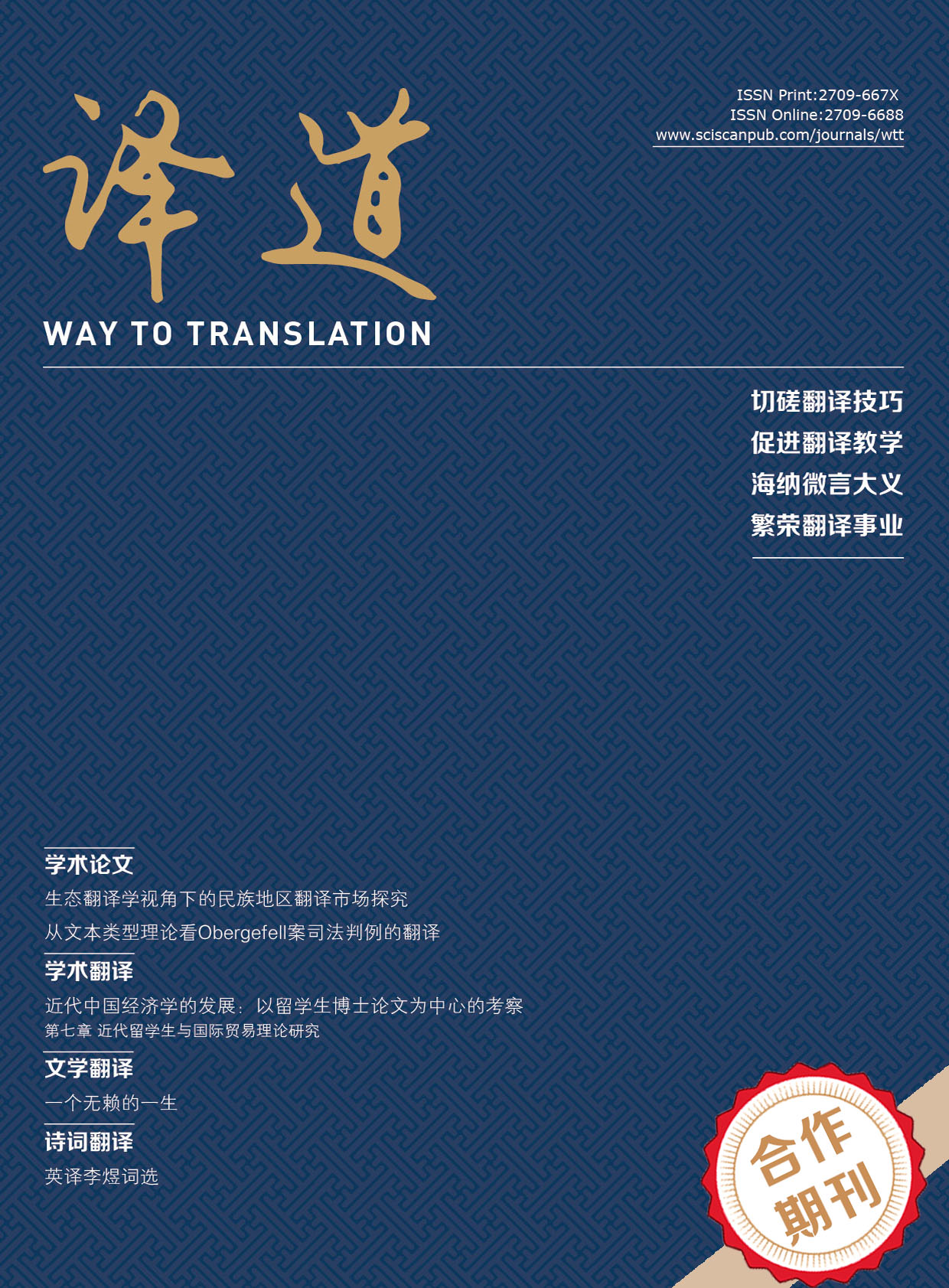Way to Translation
ISSN Print: 2709-667X
ISSN Online: 2709-6688
Contact Editorial Office
Subscribe to the latest published information from SCISCAN
网络语言中的类词缀构式“X脑/脑袋”的形成过程与机制研究
A Study of the Formation Process and Mechanism of the Quasi-affixes Construction “X nao ( 脑) / naodai ( 脑袋) ” in Network Language
- Authors: 陈诗宇
-
Information:
四川外国语大学英语学院,重庆
-
Keywords:
“X nao/naodai”; Quasi-affixes construction; Constructionalization; Conceptual metaphor; Conceptual metonymy; Construction suppression; Rhetorical suppression“X脑/脑袋”; 类词缀构式; 构式化; 概念隐喻; 概念转喻; 构式压制; 修辞压制
- Abstract: Combining free morphemes and quasi-affixes to produce new words is one of the ways to form network buzzwords. Based on the theory of constructionalization, the present study suggests that the construction “X nao/ naodai” is a constructional change of the conventional words such as “zhangnao (樟脑) ” and “bohenao (薄荷脑) ”, and this process finally achieved the constructional evolution. In addition, other constructions combined with free morphemes and body organs such as “X nao/naodai (脑/脑袋) ”, “X shou (手) ”, and “X xin (心) ” can be further abstracted into “X body organ” construction, representing a person with certain characteristics. The cognitive mechanism involved in the formation of the construction “X nao/naodai (脑/脑袋) ” is conceptual metaphor and conceptual metonymy, and the regulatory mechanism is construction suppression and rhetorical suppression. 自由词素与类词缀组合产生新词语是网络流行语形成的方式之一。以“脑”或“脑袋”为词缀发展出来的“恋爱脑”“事业脑”“草莓脑袋”“螺蛳粉脑袋”等网络词语构建了“X脑/脑袋”的构式网络。本文以构式化理论为基础,发现构式“X脑/脑袋”是由常规词语“樟脑”“薄荷脑”等产生的构式用变,进而演变成的新构式。并且“X脑/脑袋”“X手”“X心”等以“X+身体器官”为结构的构式可以被进一步抽象为“X身体器官”构式,表示具有某种特征的人。参与构式“X脑/脑袋”形成的认知机制是概念隐喻和概念转喻,调节机制是构式压制和修辞压制。
- DOI: https://doi.org/10.35534/wtt.0402004
- Cite: 陈诗宇.网络语言中的类词缀构式“X脑/脑袋”的形成过程与机制研究 [J].译道,2024,4(2):24-30.
















